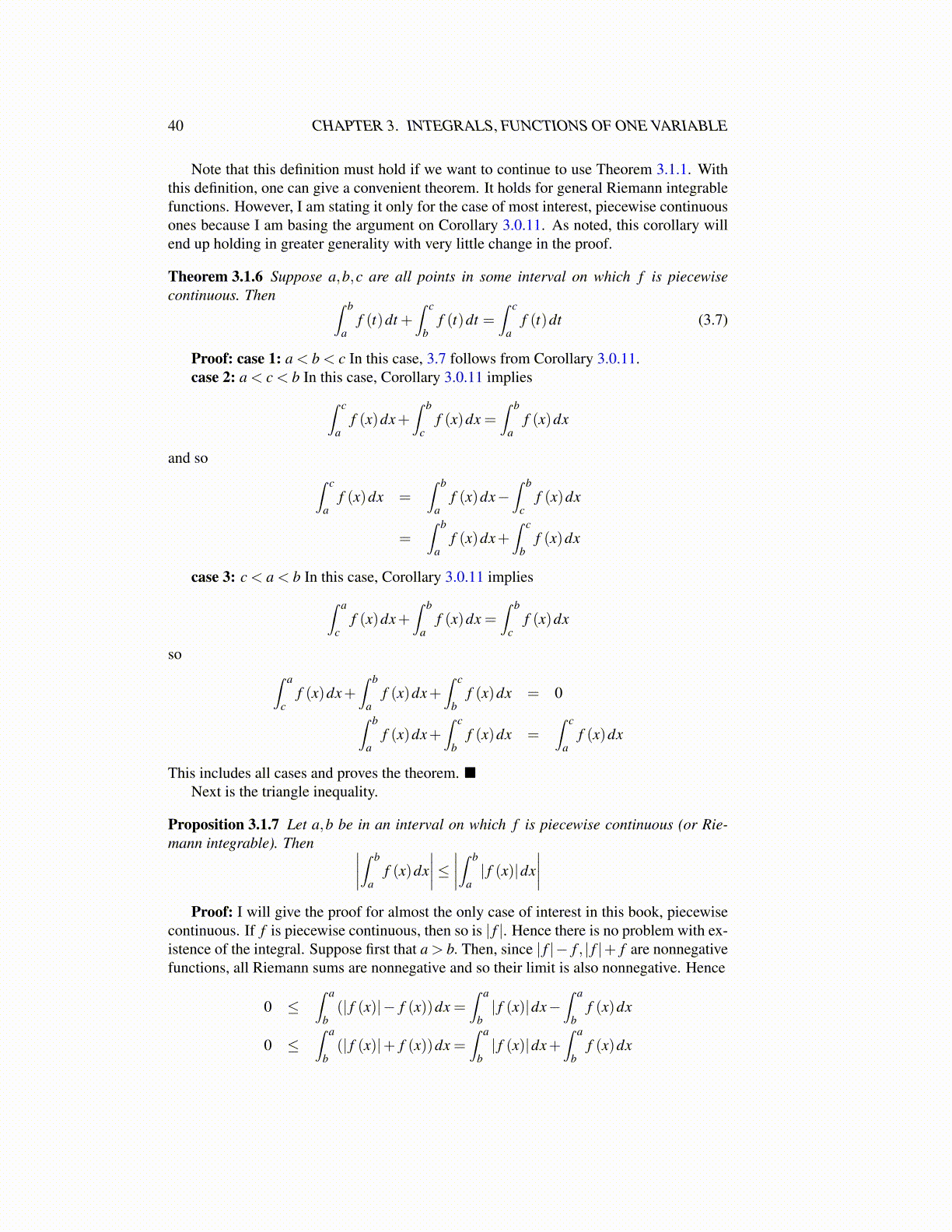
40 CHAPTER 3. INTEGRALS, FUNCTIONS OF ONE VARIABLE
Note that this definition must hold if we want to continue to use Theorem 3.1.1. Withthis definition, one can give a convenient theorem. It holds for general Riemann integrablefunctions. However, I am stating it only for the case of most interest, piecewise continuousones because I am basing the argument on Corollary 3.0.11. As noted, this corollary willend up holding in greater generality with very little change in the proof.
Theorem 3.1.6 Suppose a,b,c are all points in some interval on which f is piecewisecontinuous. Then ∫ b
af (t)dt +
∫ c
bf (t)dt =
∫ c
af (t)dt (3.7)
Proof: case 1: a < b < c In this case, 3.7 follows from Corollary 3.0.11.case 2: a < c < b In this case, Corollary 3.0.11 implies∫ c
af (x)dx+
∫ b
cf (x)dx =
∫ b
af (x)dx
and so ∫ c
af (x)dx =
∫ b
af (x)dx−
∫ b
cf (x)dx
=∫ b
af (x)dx+
∫ c
bf (x)dx
case 3: c < a < b In this case, Corollary 3.0.11 implies∫ a
cf (x)dx+
∫ b
af (x)dx =
∫ b
cf (x)dx
so ∫ a
cf (x)dx+
∫ b
af (x)dx+
∫ c
bf (x)dx = 0∫ b
af (x)dx+
∫ c
bf (x)dx =
∫ c
af (x)dx
This includes all cases and proves the theorem. ■Next is the triangle inequality.
Proposition 3.1.7 Let a,b be in an interval on which f is piecewise continuous (or Rie-mann integrable). Then ∣∣∣∣∫ b
af (x)dx
∣∣∣∣≤ ∣∣∣∣∫ b
a| f (x)|dx
∣∣∣∣Proof: I will give the proof for almost the only case of interest in this book, piecewise
continuous. If f is piecewise continuous, then so is | f |. Hence there is no problem with ex-istence of the integral. Suppose first that a > b. Then, since | f |− f , | f |+ f are nonnegativefunctions, all Riemann sums are nonnegative and so their limit is also nonnegative. Hence
0 ≤∫ a
b(| f (x)|− f (x))dx =
∫ a
b| f (x)|dx−
∫ a
bf (x)dx
0 ≤∫ a
b(| f (x)|+ f (x))dx =
∫ a
b| f (x)|dx+
∫ a
bf (x)dx